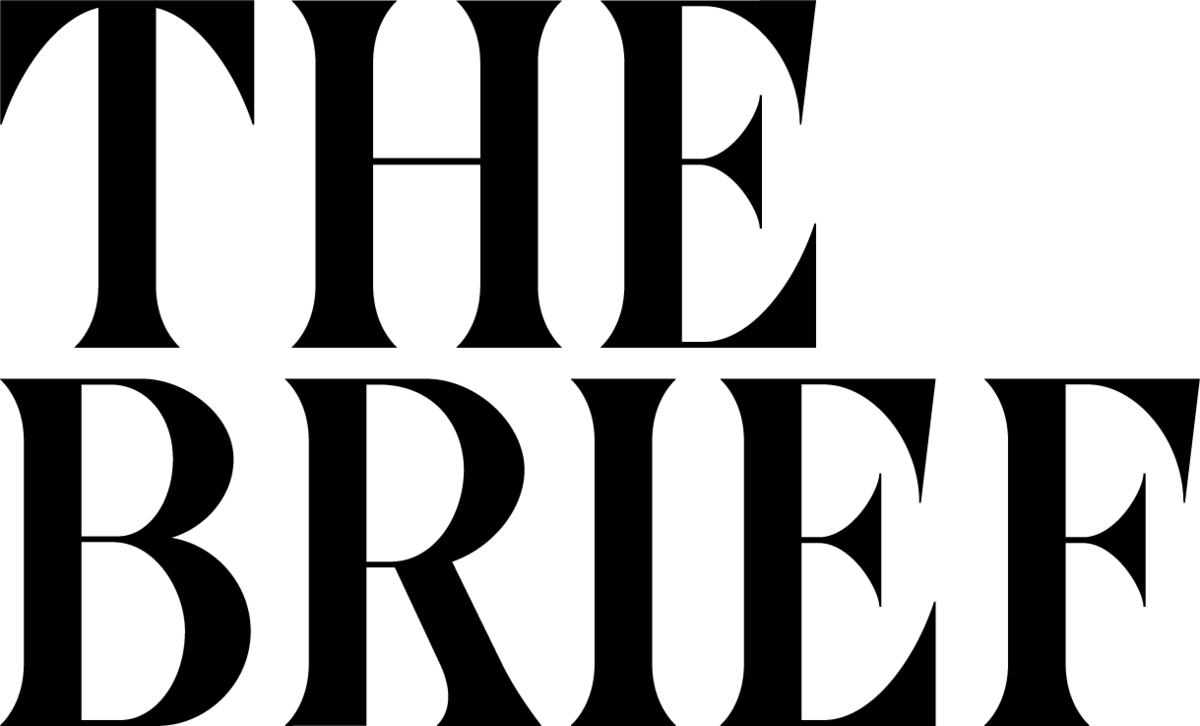18,958 founders and comms leaders start their weekend with The Colab Brief.
Join them to get weekly analysis of PR trends and non-traditional media moves.
The Supply Chain Crisis Is Escalating — But This Tech Startup Keeps Winning
Global supply chain chaos is intensifying. Major retailers warn of holiday shortages, and tech giants are slashing forecasts as parts dry up.
But while others scramble, one smart home innovator is thriving.
Their strategic move to manufacturing outside China has kept production running smoothly — driving 200% year-over-year growth, even as the industry stalls.
This foresight is no accident. The same leadership team that saw the supply chain storm coming has already expanded into over 120 BestBuy locations, with talks underway to add Walmart and Home Depot.
At just $1.90 per share, this resilient tech startup offers rare stability in uncertain times. As investors flee vulnerable companies, this window is closing fast.
Past performance is not indicative of future results. Email may contain forward-looking statements. See US Offering for details. Informational purposes only.

Last quarter, we secured 83 press hits for a single client.
They’re not an AI company, they didn’t have funding news, and they’re not a household name. But they still showed up in Bloomberg, Fortune, WIRED, and more.
How? Founder-led comms.
The PR game is in the midst of a fundamental shift. The end goal is the same—capturing attention in crowded, noisy markets. But the path is moving away from static calendars of product launches, feature updates, and funding announcements.
Instead, we’re working with clients to:
Define a bold founder narrative with a clear, often contrarian, vision for their industry
Build owned and earned distribution channels that reach the right people, consistently
Create ongoing content, commentary, and campaigns that generate momentum—not just coverage
PR used to be about media coverage. Now, it’s about narrative control and distribution.
Here are five ways we see the landscape evolving—and how the smartest teams are adapting:
Be interesting or go home
PR used to be about gatekeepers. You’d pitch a story, try to get it past an editor, and hope your audience saw it. Today, you don’t need anyone’s permission to share your point of view.
If you want attention, develop a strong (preferably contrarian) perspective, hammer it consistently, and become known for one big idea.
Example: While most of the industry leans into the AGI hype cycle, Gary Marcus has spent years publicly pushing back. The result? 61K Substack subscribers, 175K followers on X, and regular press hits—all from sticking to a sharp, differentiated narrative.Narrative is product
No one falls in love with a roadmap. But a great story can build belief, drive adoption, and create momentum.Founders who lead with a clear, compelling narrative—not just product updates—win attention and market share. So don’t just tell people what you built, show them why it matters and how you think.
Example: Tyler Denk, CEO of beehiiv, wants his company to be known for shipping features fast. So he doesn’t just announce features, he talks about how they build through weekly founder notes on team workflows, customer feedback loops, and shipping velocity. He’s not selling the product directly. He’s selling the philosophy behind it. And that’s what makes people buy in.
Don’t pitch. Publish.
Most reporters are overwhelmed, understaffed, and uninterested in your press release. Waiting for coverage isn’t always the right strategy.
If you’ve got something to say, say it. Substack, LinkedIn, X, and podcasts are your proving grounds. These channels let you test narrative strength in real time. If it resonates, the press will usually come to you.Example: Ben Lang posted a Notion template he and his wife use to manage their marriage. It went viral on X—for better and for worse—but the buzz caught the attention of a New York Times reporter who turned it into a full feature. He didn’t pitch it. He just hit publish.
Internal comms might be your most important comms
If your team can’t tell your story, your customers won’t either.
Most companies overlook their most obvious distribution channel: their own people. When employees understand—and believe in—the company’s narrative, they become a network of brand ambassadors.Great internal comms isn’t about writing scripts. It’s about clarity and consistency, so everyone can tell the story in their own voice.
Example: Look at Ramp on X. They frequently retweet posts from employees across engineering, design, and product. The tone and focus vary—but every message ladders up to the same core narrative. That’s what internal alignment looks like in public.
PR is a growth engine
Comms shouldn’t just earn headlines. It should drive results: pipeline, hiring, investor interest, and revenue.
Treat all distribution channels—owned or earned—like a product. Track the metrics, measure growth, and monitor inbounds. Every piece of content should be working toward business goals.
Example: One of our clients landed a story in HR Brew. At first, they were hesitant—“It’s just a newsletter.” But when we focused on their business goals, not vanity metrics, they decided to try it out. The result? Immediate sales and inbounds from highly targeted customers. Build your distribution, content and outreach strategy around business goals and you’ll get better results.
TL;DR: PR is no longer just about waiting for press outlets to tell your story. Media can be an important lever to pull, but founders who control their message, build distribution, and align their team around a unified story will have the most success.
📱 New in non-traditional media
Tracking the newsletters, podcasts, and creators reshaping media influence.
📰 In the news
LinkedIn now points to personal posts
Instead of linking to articles, LinkedIn has started pointing to individuals’ personal announcements to share news (see an example here.) Another sign to invest in building out your own personal brand.Henry Blodget’s got a brand new blog
The Business Insider founder launched a new Substack this week. Regenerator will “analyze the most important questions in tech, business, markets, policy, science, culture, and ideas.”
🎤 Spotlight on proptech creators
Property & real estate tech are on the rise amidst a challenging housing market. If you’re building in proptech, here are a few non-traditional media outlets to pitch:
Bi-monthly episodes exploring real estate's digital transformation and innovation landscape
Hosted by Mark Hurst, veteran proptech industry executive
Weekly interviews with CEOs, owners, and investors on tech solutions for housing, workplaces, and sustainability
Hosted by VCs Jeffrey Berman, Zach Aarons, and entrepreneur Edward Cohen
Features innovations in property management technology for real estate professionals
Highlights AI-driven solutions and automation to improve operational efficiency
New podcast featuring conversations with founders and investors about real estate tech transformation
Hosted by Shelley Robinson, experienced real estate strategist and investor
📧 Inman
Premier source for real estate tech news, reviews, and proptech innovation coverage
Delivers breaking alerts and hosts the annual Best of PropTech Awards
⭐ Favorite story of the week:
When everyone has AI, only taste matters - Kira Klaas, On Brand
As companies face growing backlash to AI, a former marketing exec at Brex and Notion explores the competitive advantage that companies gain when they invest in what AI can't yet replicate: original perspectives, authentic personality, surprising creative executions, and meaningful human connections.
⚡ Steal this pitch
Here’s a real pitch we used to land expert commentary coverage amidst a volatile stock market:
Subject: AI - Leveling the playing field amid stock market volatility
Artificial intelligence (AI) continues to solidify its influence in the markets. While major indices like the Dow, NASDAQ, and S&P 500 have experienced declines, companies unveiling new AI models, such as $META, $GOOG, $PLTR, $NVDA, saw gains. This was further cemented by Amazon CEO Andy Jassy on Thursday, as he urged companies to invest heavily in AI.
SMBs can utilize AI to level the playing field against industry giants. [SPOKESPERSON] can elaborate on:How AI democratizes access to advanced tools for SMBs.
Strategies for SMBs to successfully leverage AI for efficiency and customer engagement.
Real-world examples of smaller companies succeeding by adopting AI-driven approaches.
Are you interested in connecting with [SPOKESPERSON] to discuss?
💫 Client Wins
Our clients are making headlines. Check out coverage our clients got this week in Bloomberg, The Energy Pioneer, and LeadDev.
Want coverage like this? Say hello.

Like The Colab Brief?
Share with your friends
The Colab PR Template Pack (Now Live!)
SWAG [Exclusive]


